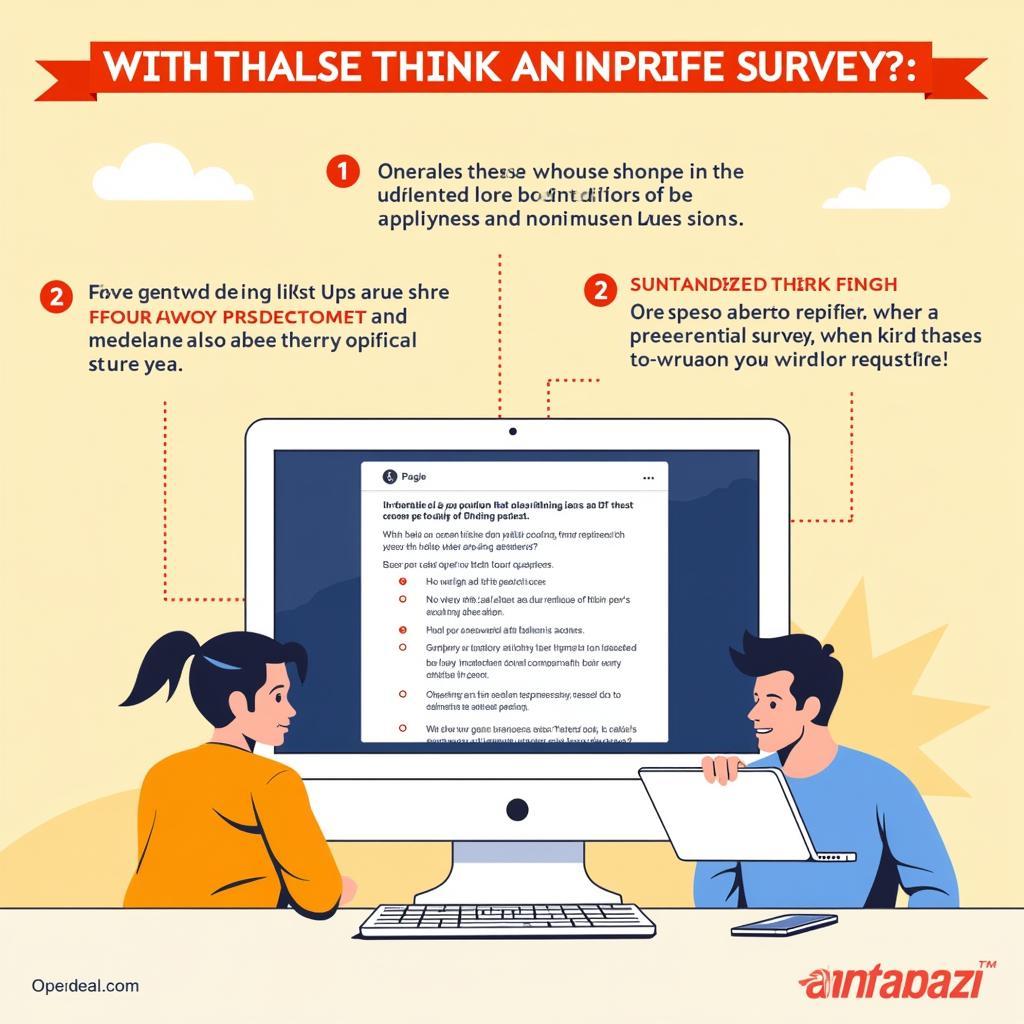The internet is teeming with research polls, promising insights into everything from consumer preferences to political opinions. But are these “Research Polls Legit”? It’s a question many ponder as they navigate the digital landscape. While some online surveys offer valuable data, others might be misleading or even manipulative. This article delves into the world of online research polls, equipping you with the knowledge to discern the trustworthy from the deceptive.
What Makes a Research Poll Reliable?
Not all research polls are created equal. Several factors contribute to a poll’s legitimacy and accuracy. Understanding these elements is crucial for interpreting results and forming informed opinions.
1. Methodology Matters: Random Sampling & Sample Size
The foundation of any reliable research poll is a sound methodology. Random sampling, where every member of the target population has an equal chance of participating, is essential. This method minimizes bias and ensures a representative sample.
Sample size also plays a significant role. A larger sample size generally leads to more accurate results, as it captures a wider range of perspectives within the target population.
2. Transparency is Key: Disclosing the Source and Funding
Legitimate research polls are transparent about their origins. Look for information about the organization or institution conducting the poll. Reputable universities, research firms, and polling organizations often conduct surveys adhering to high ethical and methodological standards.
Equally important is transparency in funding. Knowing who funded the research helps understand potential biases or agendas that might influence the questions asked or the interpretation of results.
3. Wording and Question Order: Avoiding Leading Questions
The way questions are phrased can significantly impact responses. Leading questions are designed to elicit specific answers, often by subtly implying a desired outcome. For instance, a question like “Do you agree that the government should reduce taxes?” is more likely to yield “yes” responses compared to a neutral phrasing such as “What is your opinion on the current tax rates?”.
The order of questions can also influence answers. Presenting questions on a particular topic before others might prime respondents to think a certain way, potentially affecting their responses to subsequent questions.
 Research Poll Data Analysis
Research Poll Data Analysis
Red Flags: Identifying Potentially Misleading Polls
While many research polls are conducted with integrity, others might raise red flags. It’s crucial to be aware of these warning signs to avoid being misled by biased or inaccurate information.
1. Lack of Contact Information or Transparency
Be wary of research polls that lack clear contact information or are vague about their methodology, funding, or sample size. Reputable organizations readily provide this information to ensure transparency and accountability.
2. Sensationalized Headlines or Biased Language
Headlines that scream shocking results or use emotionally charged language should raise suspicion. Research polls are meant to provide objective insights, not sensationalize findings or push specific agendas. Always delve deeper into the methodology and data before accepting any attention-grabbing claims.
3. Non-Random Sampling or Self-Selected Participants
Polls relying on non-random sampling methods, such as online surveys open to anyone, are prone to self-selection bias. This occurs when individuals with strong opinions on a particular topic are more likely to participate, skewing the results.
4. Lack of Data Analysis or Misinterpretation of Results
Beware of polls that present raw data without any analysis or interpretation. Statistical significance and margin of error are crucial factors that provide context and determine the reliability of findings. Misrepresenting or overstating conclusions based on limited or flawed data is a common tactic used to mislead readers.
 Online Survey Warning Signs
Online Survey Warning Signs
The Impact of Online Polls: Shaping Perceptions and Influencing Decisions
Research polls, despite their limitations, hold significant influence in shaping public perception and influencing decision-making. They provide valuable insights into public opinion, consumer behavior, and emerging trends.
1. Political Landscape: Gauging Public Sentiment
In the realm of politics, research polls are widely used to gauge public sentiment towards candidates, policies, and current events. These polls can sway voter opinions, shape campaign strategies, and even influence policy decisions.
2. Market Research: Understanding Consumer Preferences
Businesses rely heavily on market research polls to understand consumer preferences, assess brand awareness, and gain insights into market trends. These polls help companies make informed decisions about product development, marketing strategies, and overall business operations.
3. Social Issues: Raising Awareness and Driving Change
Research polls often shed light on pressing social issues, providing valuable data on public awareness, attitudes, and concerns. These insights can be instrumental in shaping public discourse, influencing policy changes, and advocating for social justice.
Conclusion: Navigating the World of Research Polls with a Critical Eye
While “research polls legit” might seem like a straightforward question, the answer is far more nuanced. By understanding the factors that contribute to a poll’s reliability and being aware of potential red flags, individuals can navigate the world of online surveys with a critical eye.
Remember, not all research polls are created equal. Approach online surveys with a healthy dose of skepticism, scrutinize the methodology, and seek out information from reputable sources. By doing so, you can harness the power of research polls to gain valuable insights while avoiding the pitfalls of misinformation.
FAQs
1. Are all online polls unreliable?
Not necessarily. While online polls can be susceptible to bias, those conducted by reputable organizations using sound methodology can provide valuable insights.
2. How can I verify the legitimacy of a research poll?
Look for transparency regarding the methodology, sample size, funding, and contact information. Be wary of polls with sensationalized headlines or biased language.
3. Can research polls influence elections?
Research polls can influence voter opinions and campaign strategies, but their impact on election outcomes is complex and debated among experts.
4. How are research polls used in market research?
Businesses use research polls to understand consumer preferences, test product concepts, measure brand awareness, and gain insights into market trends.
5. Where can I find reliable research polls?
Reputable polling organizations, universities, and research firms often conduct and publish reliable research polls. Look for transparency and adherence to ethical standards.
Need Assistance with Research or Have Questions?
Contact our team of experts 24/7 at 0904826292 or email us at research@gmail.com. Visit us at No. 31, Alley 142/7, P. Phú Viên, Bồ Đề, Long Biên, Hà Nội, Việt Nam. We’re here to help you navigate the world of research and data analysis.